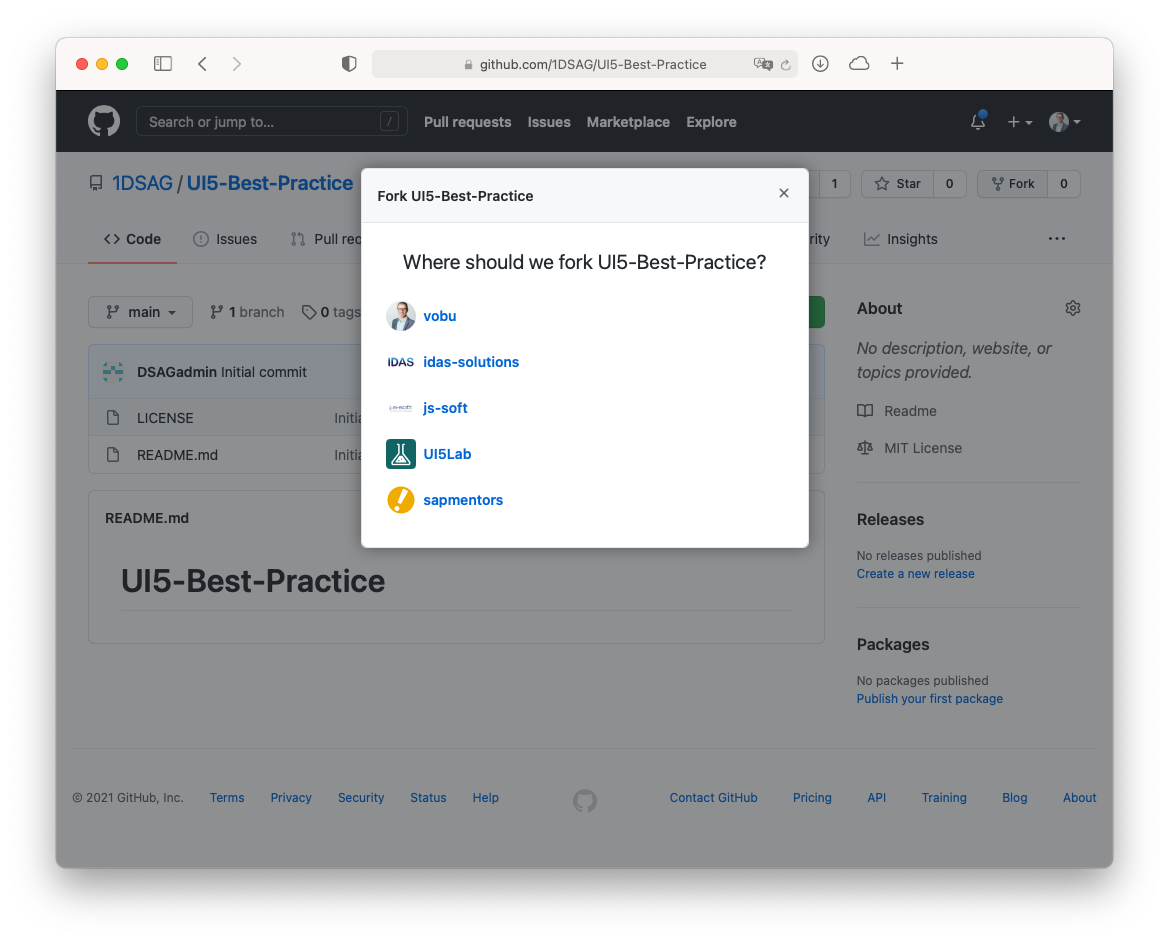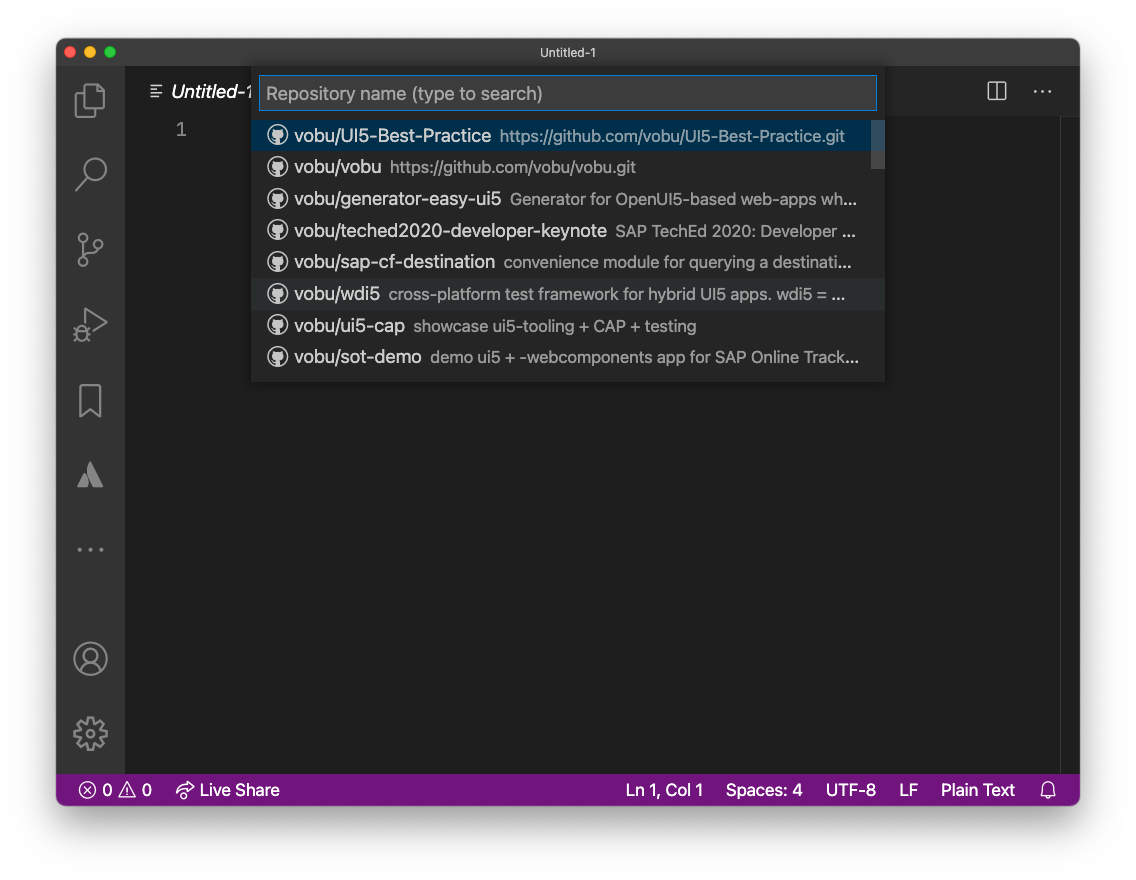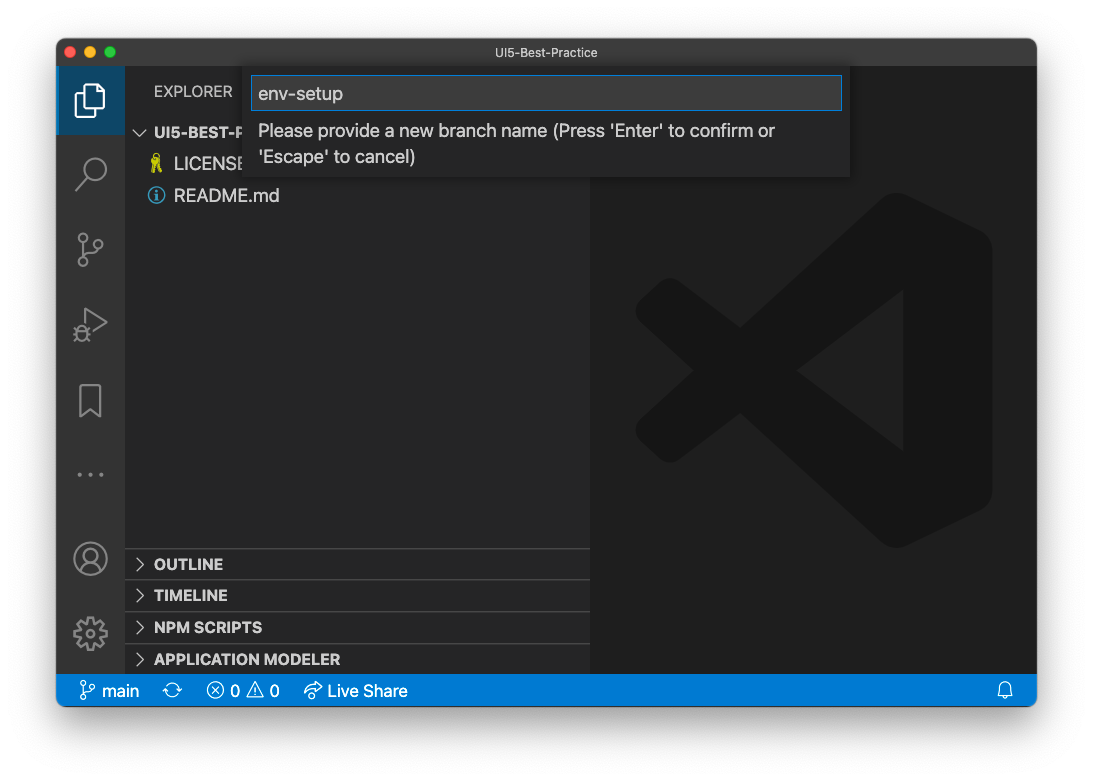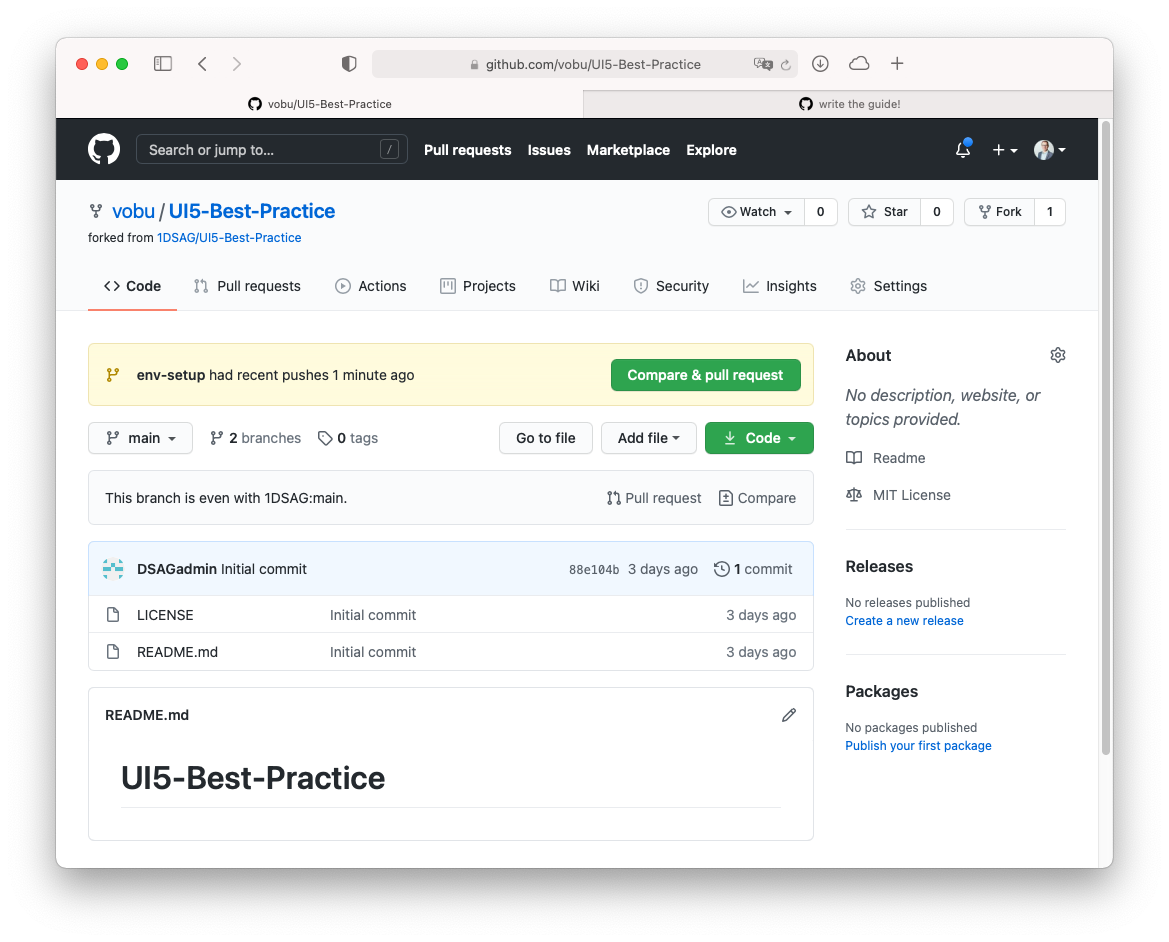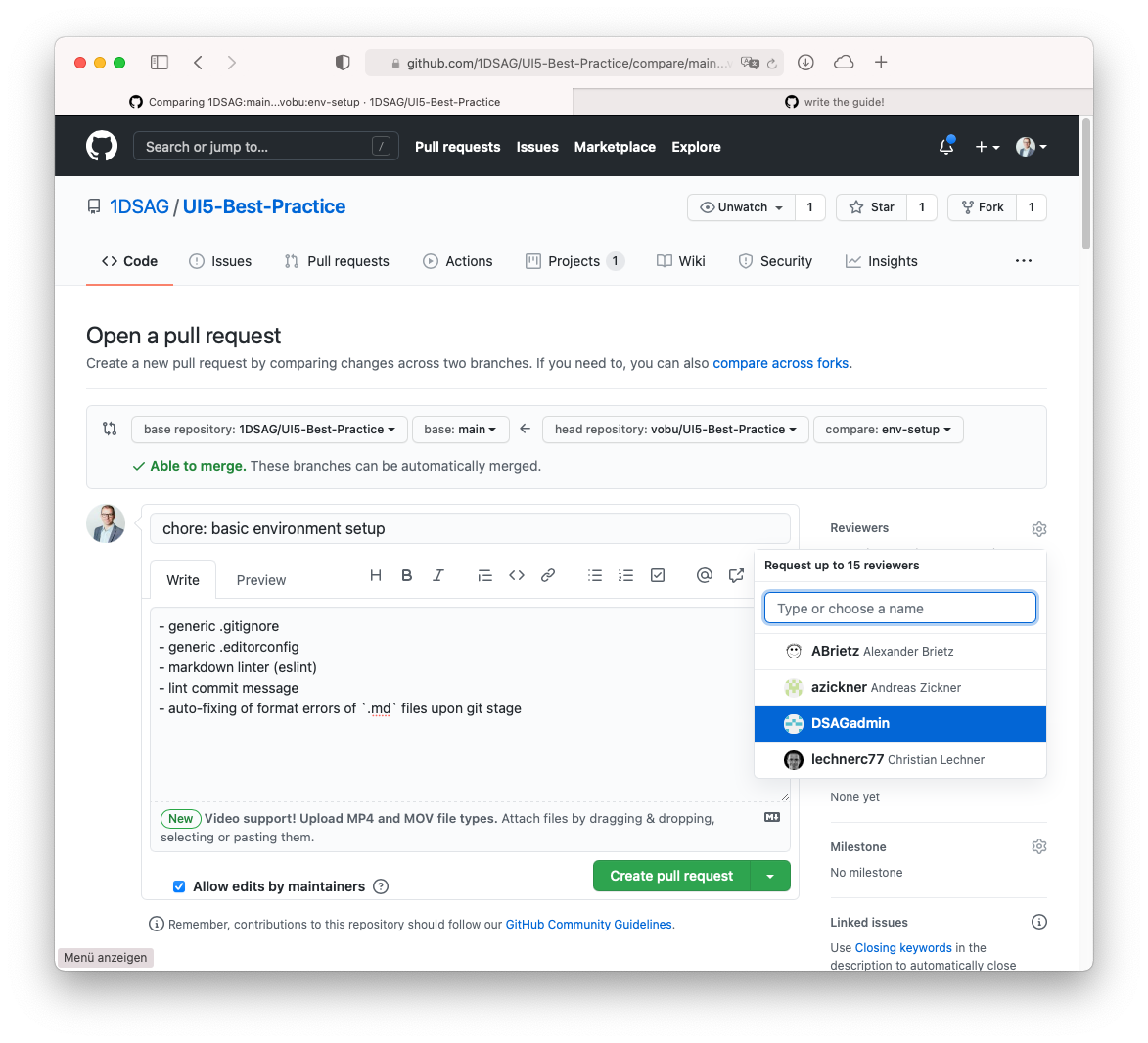DSAG's UI5 best practice guide
this is not the guide itself (it's over at https://1dsag.github.io/UI5-Best-Practice/), but the corresponding repository with instructions on how to contribute to the guide.
Because the DSAG UI5 best practice guide is a living document
The document is written in (kramdown flavored) markdown and served via jekyll in github pages (https://1dsag.github.io/UI5-Best-Practice/).
Table of contents
Local Setup / Gettings started
Recommended: Development Container
This is the easiest way to have your development environment ready in no time. You get a ready to use configured Debian Container which is transparently used by Visual Studio Code.
Getting Started
Install the following programs:
Clone the repository with the command Remote-Containers: Clone Repository in Container Volume...
This will
- Clone the Repository in a Container Volume
- Build the Docker Image
- Start the Docker Container and map the required ports
- Mount the created Container Volume
- Install the required npm packages
- Install the required ruby gems
The only thing left to do is open the console in Visual Studio Code (it is attached to the running Development Container), navigate into the docs folder and start the Development Server:
cd docs
bundle exec jekyll serve --livereloadAlternative: Local installation
Prerequisites for Windows
- Install https://chocolatey.org/
- Install MSYS2
choco install msys2https://chocolatey.org/packages/msys2 - Install Ruby
choco install rubyhttps://chocolatey.org/packages/ruby - Update Build Toolchain
ridk install 3 - see setup local github pages site
😉
Installation Steps
-
make sure,
ruby2.7 is installed on your system -
clone the repo
-
switch to the document base
$> cd docs -
$> bundle install
for installing thegithub-pagesjekyll incarnation -
start the local gh-pages instance, including automatic browser live-reload
bundle exec jekyll serve --livereload Configuration file: /Users/you/UI5-Best-Practice/docs/_config.yml Source: /Users/you/UI5-Best-Practice/docs Destination: /Users/you/UI5-Best-Practice/docs/_site Incremental build: disabled. Enable with --incremental Generating... Jekyll Feed: Generating feed for posts done in 0.233 seconds. Auto-regeneration: enabled for '/Users/you/UI5-Best-Practice/docs' LiveReload address: http://127.0.0.1:35729 Server address: http://127.0.0.1:4000/ Server running... press ctrl-c to stop.
-
point your web browser to http://localhost:4000
Developing
How to git commit messages
commit messages are linted in order to allow for automatic later processing into CHANGELOG et al documents.
The linting occurs against the standards defined in the "conventional commit" guidelines, based on the Angular project ones.
The structure of a "conventional commit" message looks like:
<type>[optional scope]: <description>
[optional body]
[optional footer(s)]
<type> can be any of
- build
- ci
- chore
- docs
- feat
- fix
- perf
- refactor
- revert
- style
- test
So a minimal commit message could look like...
feat: added basic testing chapter
…while a maxed out one might look like:
fix: correct minor typos in code
see the issue for details on typos fixed.
additionally, replaced the dreaded ortho-""
with straight/standard ones.
Reviewed-by: Z
Closes #133
Please refer to the conventional commits website for more details on all the possibilities of formatting a git commit message.
Contributing
How to use Pull Requests in GitHub
-
write, edit, code (most likely
markdowncontent in/docs/**/*.
👨💻
repeat.note: we're using
github flavoured markdown(gfm) that allows for extended markdown formattinggit commitearly,git commitoften
→ watch out for the commit linting (see git commit messages)
→ enjoy the convenience of auto-markdown-linting (see linting of markdown content) -
if applicable, clean up your git commit history
-
push the local branch to your fork
-
write the PR message similar to the git commit messages, so
squash-merging gets easy for the maintainers
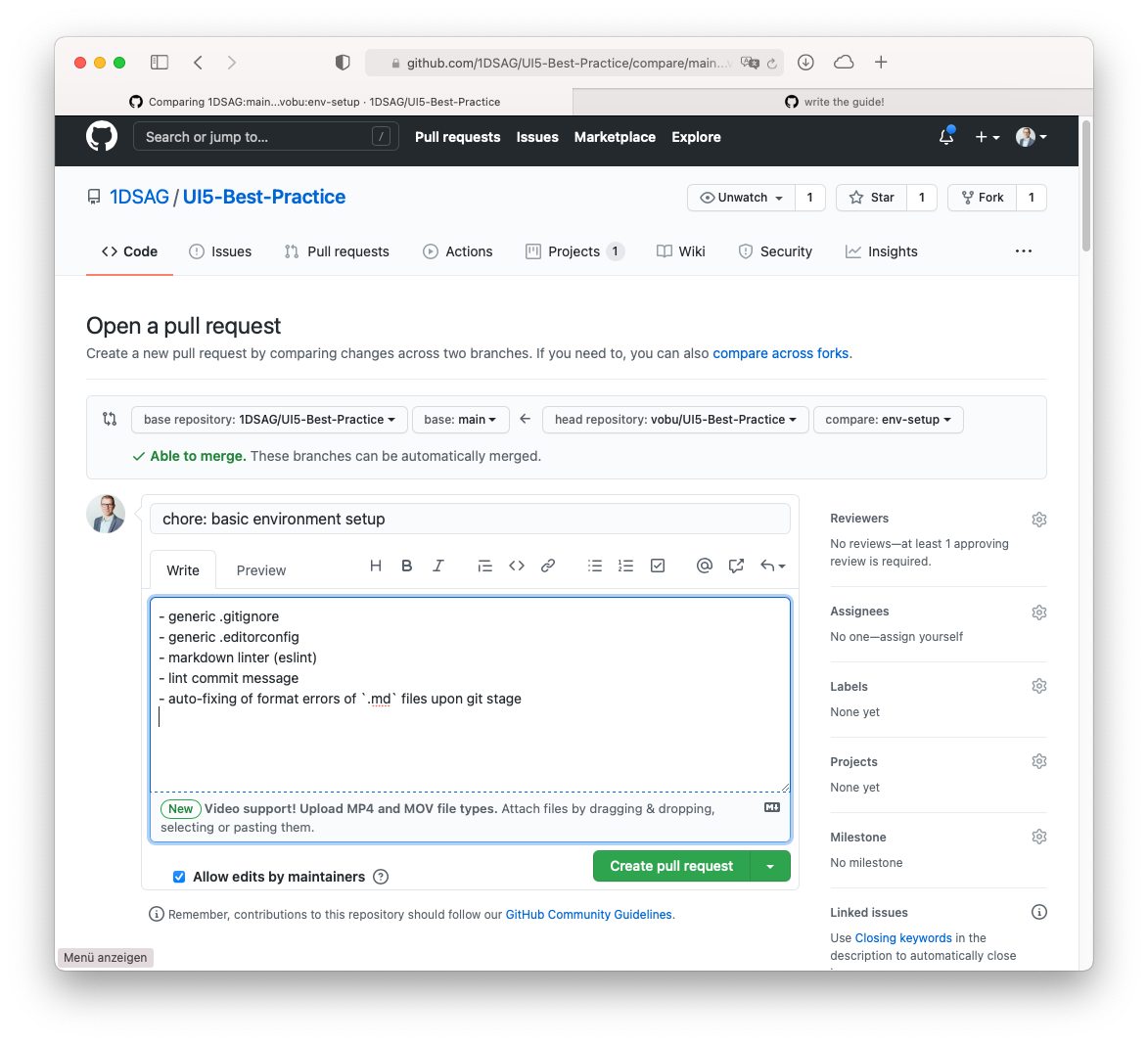 if applicable, referenc open issues in your commit message (https://docs.github.com/en/free-pro-team@latest/github/managing-your-work-on-github/linking-a-pull-request-to-an-issue#linking-a-pull-request-to-an-issue-using-a-keyword)
if applicable, referenc open issues in your commit message (https://docs.github.com/en/free-pro-team@latest/github/managing-your-work-on-github/linking-a-pull-request-to-an-issue#linking-a-pull-request-to-an-issue-using-a-keyword) -
Changes necessary after the PR was created?
Simply commit to the branch of your fork
→ the PR gets updated automatically
→ move the PR intodraftmode until ready (then move toready for review) -
PR review process successfully completed?
Then the PR will be merged by any of the maintainers and it’s time for🎉
linting of markdown content
Any markdown content (in /docs/**/*) is linted via markdownlint both for quality assurance and convenience.
For quality assurance, to have the markdown-files max standard compliant, so subsequent processing and exporting is possible without running into formatting issues.
For convenience, because small markdown formatting mistakes are automatically fixed via the markdownlint upon commit - the markdownlint cli injects those fixes prior to the git commit, so don’t be surprised
Licensing
This project uses the MIT license : LICENSE





